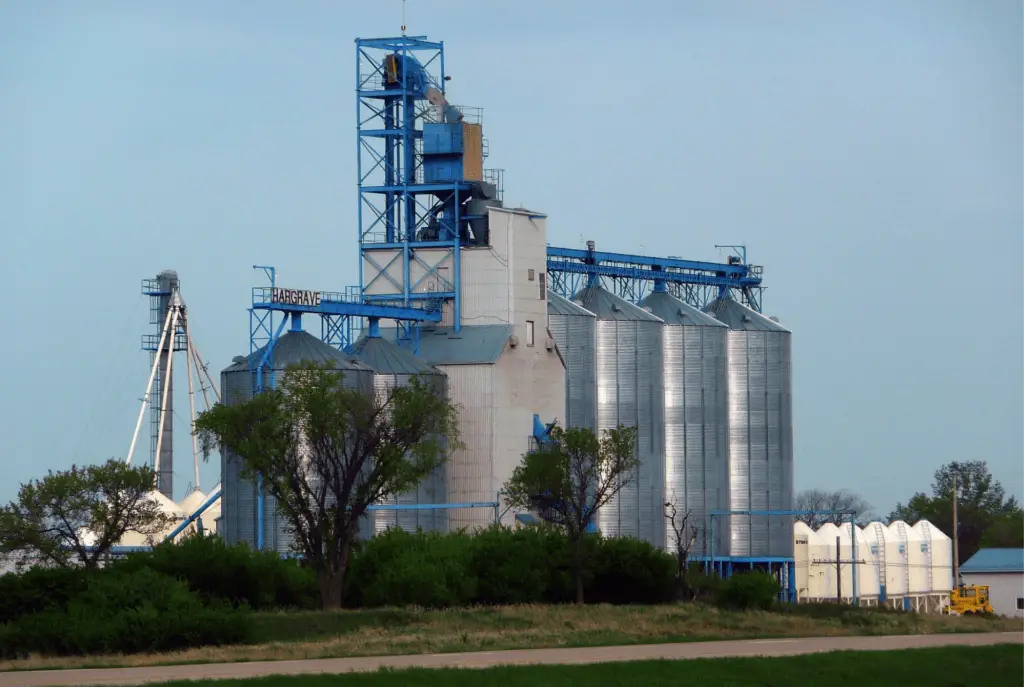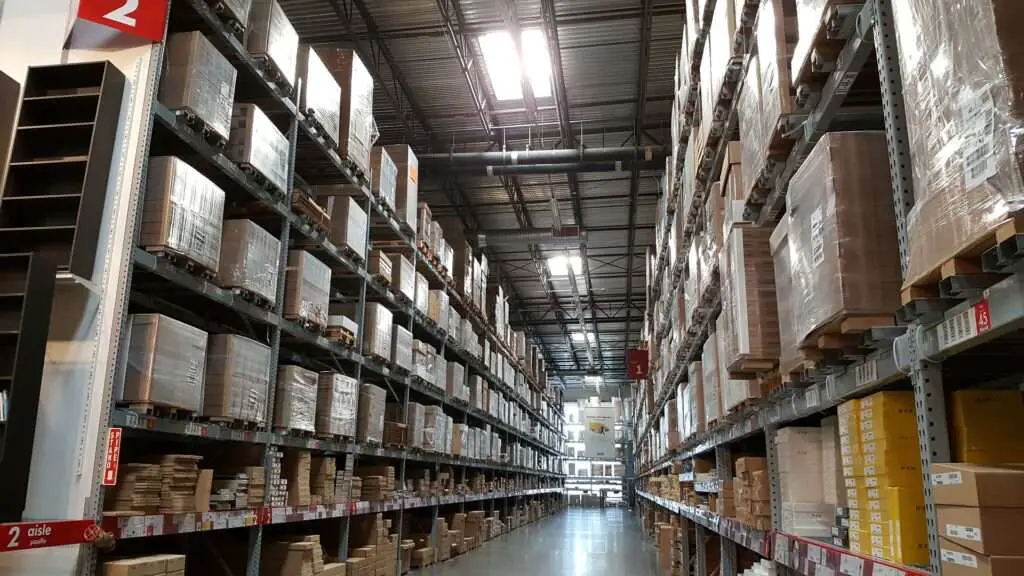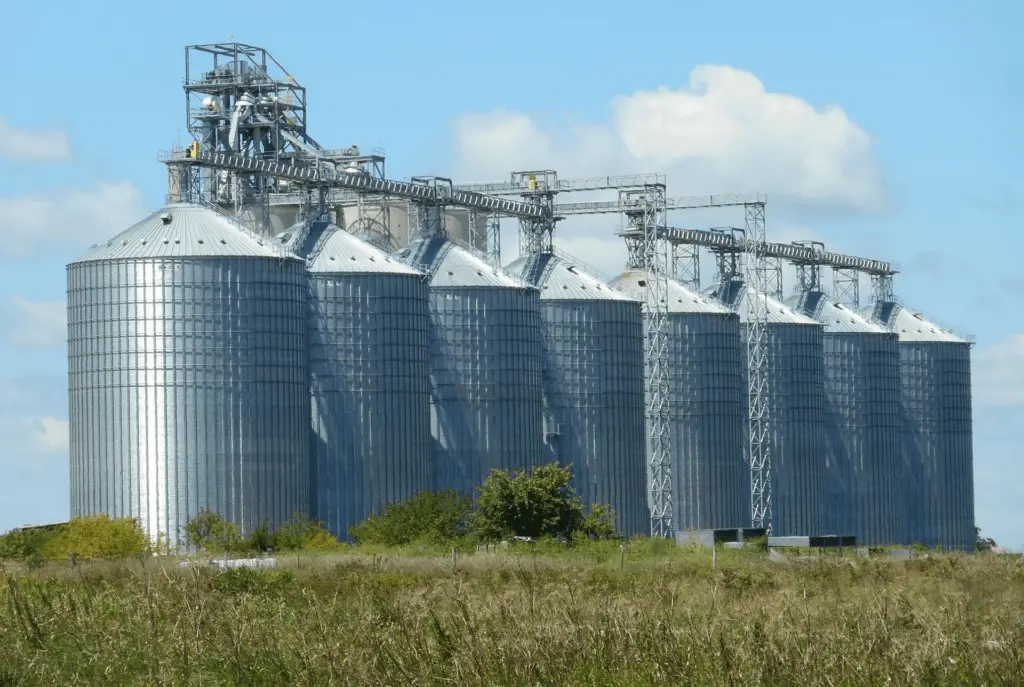
What is bulk materials?
Bulk materials refer to large quantities of goods or substances that are stored and transported in large volumes. These materials can be dry goods, liquid bulk, or hazardous substances.
Dry goods can include items such as grains, fertilizers, construction materials, or industrial products like chemicals and metals.
Liquid bulk materials can include petroleum, chemicals, or food-grade liquids.
Hazardous substances can encompass a wide range of materials that require special handling and storage due to their potential risks.
Top 5 solutions to store bulk materials
When it comes to storing bulk materials, there are several options to consider. Here are the top 5 solutions for storing your valuable cargo:
1. Warehouses
Warehouses provide a versatile solution for bulk material storage. They offer ample space and can be customized to meet specific storage requirements.
Whether you need temperature controls, access restrictions, or shelving systems for efficient organization, warehouses can accommodate a wide range of materials.
2. Silos
Silos are specifically designed for storing granular materials such as grain, cement, or coal. They offer excellent protection from moisture and pests, ensuring the quality and longevity of the stored materials.
Silos also provides easy loading and unloading capabilities, making them a convenient option.
3. Tanks
Tank storage solutions are ideal for liquid bulk materials, including petroleum, chemicals, or food-grade liquids.
Tanks are designed to meet industry regulations and standards for safety and containment. With various sizes and configurations available, tanks offer efficient storage and transportation of liquid cargo.
4. Containers
Containers are a popular choice for bulk material storage due to their versatility and mobility. They come in different sizes and can be easily transported and stacked.
Containers offer protection from external elements and are suitable for a wide range of materials.
5. Barges and Ships
If you need to store bulk materials in large quantities, barges and ships can be an effective solution.
They provide storage on a massive scale and can transport materials to different locations. This option is especially useful for industries involved in international trade.
What are the three main types of storage in a warehouse?
The three main types of storage in a warehouse include floor storage, rack storage, and bin storage.
Floor storage refers to storing bulk materials directly on the warehouse floor.
This method is ideal for large and heavy items that do not require special handling or organization. It offers easy access to the materials and can accommodate varying sizes and quantities.
Rack storage involves using pallet racks or shelving units to store bulk materials.
This method maximizes vertical space and allows for efficient organization. It is suitable for smaller items that can be stored on pallets or shelves and offers easy accessibility and inventory management.
Bin storage involves using bins or containers to store bulk materials.
This method is particularly useful for small parts or items that need to be kept organized and separated. It allows for easy picking and sorting of materials and helps optimize space utilization.
Also Read:
What is bulk storage of grains?
Bulk storage of grains refers to the practice of storing large quantities of grain in specialized facilities or containers.
Bulk storage of grains is essential for several reasons.
Firstly, it allows for efficient handling and transportation of large quantities of grain.
Instead of storing grains in individual bags or containers, bulk storage enables farmers, distributors, and manufacturers to store grains in one central location, saving time and resources.
Secondly, bulk storage helps preserve the quality and integrity of the grains.
Specialized storage facilities, such as silos, are designed to protect grains from moisture, pests, and other environmental factors that could lead to spoilage or contamination.
This ensures that the stored grains remain in optimal condition until they are ready to be used or transported.
Finally, bulk storage of grains offers cost savings.
Storing grains in bulk is generally more cost-effective than storing them in individual packaging.
It reduces the need for excessive packaging materials and simplifies the handling and transportation process, resulting in reduced labor and logistical costs.
Advantages and disadvantages of warehouse storage

Warehouse storage offers several advantages for bulk material storage, but it also has its fair share of disadvantages.
Advantages
1. Ample Space: Warehouses provide ample space to accommodate large quantities of bulk materials.
They offer flexibility in terms of storing different types of materials and can be customized to meet specific storage requirements.
2. Customization: Warehouses can be customized to meet specific storage needs, including temperature controls, access restrictions, and efficient organization systems.
This allows for optimal storage conditions and easy accessibility to the stored materials.
3. Protection: Warehouses protect from external elements such as moisture, pests, and harsh weather conditions.
This ensures the integrity and quality of the stored materials, reducing the risk of spoilage or damage.
4. Security: Warehouses can be equipped with surveillance systems, access controls, and fire safety measures to protect the valuable cargo.
This provides a secure environment for storing bulk materials, especially those that are high-value or require extra security measures.
Disadvantages
1. Cost: Setting up and maintaining a warehouse can be expensive. Construction, operational, and maintenance costs can be substantial, especially for larger warehouses.
2. Space Limitations: Warehouses require ample space, and not all businesses have access to large enough facilities. Limited space can restrict the amount of bulk material that can be stored.
3. Handling Effort: Managing and organizing bulk materials in a warehouse requires labor and effort. This includes activities such as loading, unloading, and inventory management, which can be time-consuming and labor-intensive.
4. Transportation: Warehouses are static locations, which means that transportation of bulk materials to and from the warehouse is required.
This adds to logistical complexities and costs, especially for businesses with multiple locations or international operations.
Advantages and disadvantages of silos storage

Advantages of Silos Storage:
1. Excellent Protection: Silos provide excellent protection against moisture, pests, and other environmental factors that can affect the quality and integrity of the stored materials.
2. Efficient Loading and Unloading: Silos are designed for easy loading and unloading of granular materials.
With their convenient access points and discharge mechanisms, the process of transferring materials in and out of the silos is streamlined and efficient.
3. Space Optimization: Silos are a space-efficient storage option. They can be stacked or interconnected to maximize the use of available vertical space.
4. Cost Savings: By storing materials in large quantities, businesses can often negotiate better prices from suppliers.
Additionally, silo storage eliminates the need for individual packaging, saving on packaging costs.
5. Flexibility: Silos can be designed and customized to meet specific storage requirements.
Whether it’s the capacity, material flow rate, or discharge options, silos can be tailored to suit the specific needs of the materials being stored.
Disadvantages of Silos Storage:
1. Initial Investment: Constructing silos can be a significant initial investment.
The cost of building the silos and the necessary infrastructure can be higher compared to other storage options.
2. Material Degradation: Some materials stored in silos, especially certain grains, may experience quality degradation over time.
This requires proper storage and rotation strategies to prevent any spoilage or deterioration.
3. Limited Versatility: Silos are designed specifically for storing granular materials, so they may not be suitable for all types of bulk materials.
4. Rigidity: Silos are fixed structures, which means they cannot be easily moved or relocated.
This lack of mobility can be a disadvantage if the materials need to be transported or if there is a need for flexibility in storage arrangements.
5. Maintenance and Cleaning: Silos require regular maintenance and cleaning to ensure optimal performance and prevent material buildup or contamination.
This can be time-consuming and may require additional labor and resources.
Advantages and disadvantages of tank storage

Tank storage offers several advantages as a storage solution for bulk materials, but it also comes with some disadvantages.
Advantages of Tank Storage:
1. Safety and Containment: Tanks are designed to meet industry regulations and standards for the safe storage of liquid bulk materials.
They provide the necessary containment measures to prevent leaks, spills, or contamination.
2. Flexibility: Tanks come in various sizes and configurations, allowing for efficient storage and transportation of liquid cargo.
They can be easily transported and installed, making them suitable for temporary storage or on-site needs.
3. Protection: Tanks offer protection from external elements such as temperature changes, moisture, and contamination.
This helps to maintain the quality and purity of the stored liquids, ensuring they remain in optimal condition until they are needed.
Disadvantages of Tank Storage:
1. Cost: The construction and maintenance costs of tanks can be significant, especially for larger tanks or specialized storage requirements.
2. Space Limitations: Tanks require adequate space for installation and operation. Limited space can restrict the number or size of tanks that can be installed.
3. Cleaning and Maintenance: Tanks require regular cleaning and maintenance to ensure optimal performance and prevent the buildup of sediment or contaminants.
This can be time-consuming and may require additional labor and resources.
Advantages and disadvantages on barges & ships storage

When it comes to storing bulk materials in large quantities, barges and ships can be an effective solution.
Here are advantages of using barges and ships for storage:
1. Storage Capacity: Barges and ships can accommodate large quantities of bulk materials, making them ideal for industries involved in international trade or large-scale operations.
2. Mobility: Unlike warehouses or silos, barges and ships offer mobility, allowing materials to be transported to various locations as needed. This flexibility is especially useful for industries that require materials to be moved between different sites.
3. Cost-Effective: Storing materials on barges and ships can be a cost-effective solution, especially for industries that rely on bulk transportation. Instead of renting or constructing storage facilities, utilizing existing vessels can help reduce overhead costs.
While barges and ships offer several advantages, there are also some disadvantages to consider:
1. Environmental Factors: Barges and ships are exposed to environmental factors such as waves, storms, and temperature fluctuations.
These factors can impact the safety and integrity of the stored materials, requiring additional precautions.
2. Transportation Costs: Transporting bulk materials on barges and ships can incur transportation costs, especially for long distances or international routes.
3. Limited Accessibility: While barges and ships offer mobility, accessing stored materials on these vessels can be more challenging compared to stationary storage options like warehouses or silos.
It may require coordination with port facilities and logistical planning.
